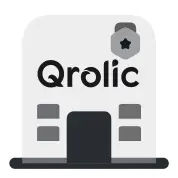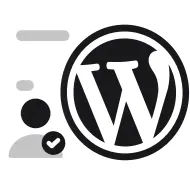When it comes to designing a website, one of the most common questions businesses ask is: “How many pages do I actually need?” The answer is not one-size-fits-all. Your website’s page count depends on your business goals, audience, and the type of website you’re building. This guide will break down everything you need to know, from the essential pages every website needs to advanced strategies for scaling your content effectively.
Quick Summary:
- Page count depends on your goals and content.
- Every website needs 4-5 core essential pages.
- Add specific pages based on your business type.
- Focus on quality and purpose, not just quantity.
Table of Contents
- Understanding the Purpose of Your Website
- Core Pages Every Website Should Have
- 1. Home Page
- 2. About Us Page
- 3. Services or Products Page
- 4. Contact Page
- 5. Blog or Resource Page
- Additional Pages Based on Your Business Type
- For eCommerce Websites
- For Service-Based Businesses
- For Blogs & Educational Sites
- How to Determine the Right Number of Pages
- Step 1: Define Your Goals
- Step 2: Map Out the User Journey
- Step 3: Consider SEO and Content Strategy
- Step 4: Avoid Overloading Pages
- Benefits of Having the Right Number of Pages
- Common Mistakes to Avoid
- Examples of Page Structures
- How Qrolic Technologies Can Help
- Conclusion
Understanding the Purpose of Your Website
Before diving into page numbers, it’s crucial to understand why your website exists. The purpose of your website drives the structure, content, and ultimately the number of pages required. Some common purposes include:
- Brand Awareness: Inform visitors about your company and services.
- Lead Generation: Encourage visitors to fill forms, sign up, or contact you.
- Sales & eCommerce: Sell products or services directly through the website.
- Education & Resources: Provide content like blogs, guides, and tutorials.
Once the purpose is clear, you can plan the type and number of pages needed to meet those goals.
Core Pages Every Website Should Have
Regardless of your business size or industry, there are a few pages every website should include. These form the foundation of your site and provide essential information to visitors.
1. Home Page
- Purpose: Introduce your brand and guide visitors to other important pages.
- Content Tips: Highlight your value proposition, include key CTAs (Call to Actions), and showcase your services or products.
- SEO Tip: Use primary keywords related to your business in headings and meta descriptions.
2. About Us Page
- Purpose: Build trust by sharing your story, mission, and team.
- Content Tips: Include a brief history, core values, and staff photos or bios.
- SEO Tip: Use local keywords if you serve a specific region.
3. Services or Products Page
- Purpose: Clearly explain what you offer.
- Content Tips: Include detailed descriptions, features, benefits, pricing (if applicable), and high-quality images.
- SEO Tip: Use service-specific keywords for each offering.
4. Contact Page
- Purpose: Make it easy for visitors to reach you.
- Content Tips: Include contact forms, phone numbers, email addresses, physical addresses, and links to social media profiles.
- SEO Tip: Include location-based keywords to optimize for local search.
5. Blog or Resource Page
- Purpose: Share valuable content, build authority, and improve SEO.
- Content Tips: Post articles, guides, news updates, and case studies regularly.
- SEO Tip: Target long-tail keywords relevant to your niche.
Additional Pages Based on Your Business Type
Depending on your industry and business model, you might need extra pages beyond the basics.
For eCommerce Websites
- Product Category Pages: Organize products for easy navigation.
- Individual Product Pages: Include detailed descriptions, images, and reviews.
- Shopping Cart & Checkout Pages: Streamline the buying process.
- FAQ Page: Answer common product-related questions.
For Service-Based Businesses
- Case Studies or Portfolio Pages: Showcase your work and results.
- Testimonials Page: Build credibility with client reviews.
- Pricing Page: Clearly outline packages or rates.
For Blogs & Educational Sites
- Category Pages: Organize content by topic for better user experience.
- Archive Pages: Make older posts easily accessible.
- Landing Pages: Capture leads for newsletters, ebooks, or webinars.
How to Determine the Right Number of Pages
Instead of randomly adding pages, follow a structured approach to determine what your website truly needs.
Step 1: Define Your Goals
Ask yourself:
- What action do I want visitors to take?
- Am I selling products, generating leads, or providing information?
- Who is my target audience?
Step 2: Map Out the User Journey
- Identify the path a visitor takes from landing on your site to completing a goal.
- Each stage may require a separate page (e.g., product info → add to cart → checkout).
Step 3: Consider SEO and Content Strategy
- Pages allow search engines to index your content.
- Each page should target specific keywords and topics.
Step 4: Avoid Overloading Pages
- More pages don’t always mean better results.
- Focus on quality and relevance rather than quantity.
Benefits of Having the Right Number of Pages
- Better SEO Performance: Targeted pages improve search engine ranking.
- Improved User Experience: Visitors can easily find information.
- Higher Conversion Rates: Clear navigation leads to more completed actions.
- Scalability: Makes it easier to add new content without redesigning the website.
Common Mistakes to Avoid
- Too Few Pages: Visitors can’t find information, leading to high bounce rates.
- Too Many Pages: Navigation becomes confusing, overwhelming users.
- Duplicate Content: Can harm SEO and user trust.
- Neglecting Mobile Users: Ensure each page is mobile-friendly.
Examples of Page Structures
Here’s a breakdown of typical page counts based on website type:
| Website Type | Recommended Pages | Notes |
|---|---|---|
| Small Business | 5–7 | Home, About, Services, Contact, Blog, Testimonials |
| Medium Business | 7–15 | Includes Case Studies, Portfolio, Pricing, FAQ |
| eCommerce | 20+ | Category pages, Product pages, Checkout, Policies |
| High-Traffic Blog | 15–30+ | Category, Archive, Landing Pages, Guides, Resource Center |
How Qrolic Technologies Can Help
At Qrolic Technologies, we specialize in designing custom WordPress websites that are not only visually stunning but also perfectly structured for your business needs.
- Expert Guidance: We help determine exactly how many pages your website needs to maximize impact.
- Custom Design: Every page is crafted for usability, SEO, and performance.
- Performance Optimization: Fast loading times and scalable architecture for high-traffic sites.
- Ongoing Support: From updates to troubleshooting, we manage your website so you can focus on growth.
Whether you’re launching a small business website or a complex eCommerce platform, we ensure your pages are strategically designed to drive results.
Conclusion
The question “How many pages do you need?” doesn’t have a universal answer—it depends on your goals, audience, and business type. A well-structured website balances enough pages to cover essential content while remaining simple and easy to navigate.
Investing in the right number of pages improves SEO, user experience, and conversion rates. With expert guidance from Qrolic Technologies, you can ensure your website has the optimal page structure, is fully scalable, and drives measurable results.
Your website isn’t just a digital presence—it’s your brand, your sales team, and your customer service all in one. Make every page count.






